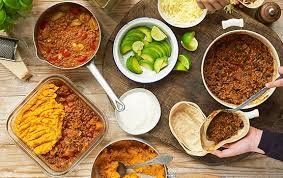
Finding time to cook healthy meals can feel like a challenge. Between work, family obligations, and social commitments, many people turn to convenience foods or takeout, sacrificing nutrition and their budgets. But what if there were a way to maintain your well-being, save time, and reduce food waste—all while enjoying delicious home-cooked meals? Enter batch cooking, a strategy that has gained popularity for its ability to streamline meal preparation and support a balanced lifestyle.
What Is Batch Cooking?
At its core, batch cooking involves preparing multiple portions of meals or meal components in advance. Instead of cooking one dinner at a time, you might make a large pot of soup, a tray of roasted vegetables, or several servings of grain-based salads all at once. These prepared dishes are then stored in the fridge or freezer, ready to be reheated and enjoyed whenever needed. This method isn’t just for busy professionals or parents—it’s a tool anyone can use to simplify mealtimes. By cooking in bulk, you eliminate the daily stress of deciding what to eat and avoid the temptation of less nutritious, last-minute choices. It’s an efficient way to manage your time, eat well, and reduce reliance on processed options.
Benefits Beyond Convenience
One of the most compelling reasons to embrace batch cooking is its ability to support a balanced diet. When you plan and prepare your meals in advance, you have greater control over the ingredients. This means you can include a variety of vegetables, lean proteins, and whole grains in your dishes while minimizing additives like excess salt or sugar. For additional support in maintaining general health and well-being, consider incorporating supplements like USANA Cellsentials, which are designed to complement a balanced diet and promote overall wellness.
Batch cooking also encourages mindful eating habits. With meals already portioned out, you’re less likely to overeat or reach for unhealthy snacks out of convenience. Additionally, knowing that you’ve already invested time into meal prep may motivate you to stick to your plan rather than ordering takeout.
Getting Started with Batch Cooking
If you’re new to batch cooking, the process can seem intimidating, but it doesn’t have to be. Start with a plan. Set aside time each week to decide what meals you’d like to prepare. Choose recipes that are easy to scale and reheat well, such as casseroles, soups, stews, or stir-fries.
Next, create a shopping list based on your chosen recipes. Buying ingredients in bulk can save money and reduce packaging waste. Once you have everything you need, dedicate a few hours to cooking and assembling your meals. Some people prefer to cook on Sundays so they’re ready for the week ahead, but the best time is whatever works with your schedule.
Storage Tips for Success
Proper storage is key to making batch cooking work for you. Invest in quality containers that are freezer-safe and portion-sized. Glass containers are a great option because they’re reusable, durable, and easy to clean. Label each container with the meal name and date so you can keep track of what needs to be eaten first.
When storing food, be mindful of safety guidelines. Cool cooked items quickly before placing them in the fridge or freezer to prevent bacteria growth. Refrigerated meals should generally be eaten within 3–4 days, while frozen dishes can last for several months.
Variety Is the Spice of Life
One common concern with batch cooking is the fear of eating the same thing repeatedly. The good news is that variety is easily achievable with a little creativity. Instead of preparing just one meal in bulk, focus on cooking components you can mix and match. For instance, roasted chicken, quinoa, and steamed vegetables can be combined in various ways to create salads, grain bowls, or wraps. Spices, sauces, and toppings can also add diversity. A simple tomato-based pasta sauce can be used over noodles one day and as a base for shakshuka the next. By planning versatile ingredients, you can keep your meals exciting and avoid mealtime monotony.
The Environmental and Financial Perks
Beyond its personal benefits, batch cooking is also an environmentally friendly practice. By planning meals in advance, you’re less likely to let food go to waste. Additionally, buying ingredients in bulk reduces packaging and transportation emissions. Financially, the savings can be significant, as you’ll spend less on last-minute takeout and pre-packaged foods.
A Small Change with Big Rewards
Batch cooking is more than a time-saving hack—it’s a lifestyle change that can support your overall well-being. By taking a few hours each week to plan and prepare meals, you’ll enjoy the freedom of stress-free mealtimes, maintain a balanced diet, and even help the environment. Whether you’re a seasoned chef or a kitchen novice, this approach is accessible, practical, and adaptable to your needs.
Why not give it a try? With a little planning and preparation, you might just discover that batch cooking is the secret ingredient to a simpler, healthier, and more fulfilling way of eating.

